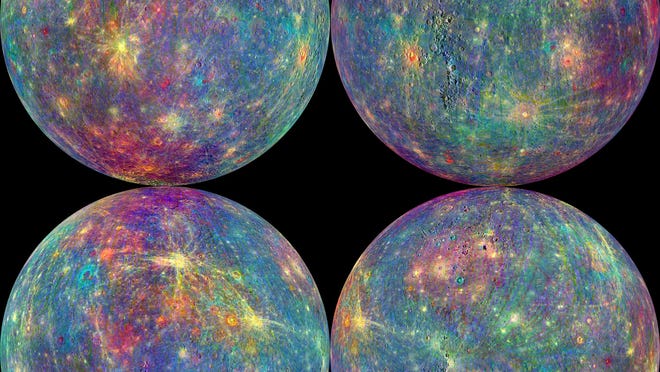NASA’s Hubble Space Telescope has captured a stunning new image of a galaxy that’s over twice the size of our Milky Way.
According to NASA, the gigantic elliptical galaxy (dubbed NGC 474) sits about 100 million light-years from Earth, toward the constellation of Pisces. And its size stretches almost 250,000 light-years across – which is 2.5 times larger than our own Milky Way galaxy.
Last week, NASA released a rare, close-up view of NGC 474’s central region, captured by the Hubble telescope’s “superb sharp eye.”
“Images like this are showing the complexity and activity of galaxies.” Hubble’s senior project scientist Dr. Jennifer Wiseman told USA TODAY in an emailed statement.
In addition to its massive size, NGC 474 is unique because it has a series of complex, layered shells of dust and gas that surround its core. How exactly the shells formed is still unknown, but astronomers believe that they may have resulted from the galaxy absorbing one or more smaller galaxies over time.
James Webb Telescope:NASA releases stunning images from James Webb Space Telescope in final stage of testing
Thanks to the Hubble telescope, Wiseman explained, astronomers know that galaxies have frequently merged with their neighbors by mutual gravitational pulls throughout cosmic history. And a longer merger process, which can take billions of years, creates a much larger merged galaxy and often sparks a “frenzy of star formation as gas within the region is stirred up and compressed.”
While NGC 474 is an elliptical galaxy (and among the only 10% of elliptical galaxies with shell structures), numerous types of modern galaxies are also the products of previous mergers. Our spiral Milky Way, for example, experienced a merger but ended in a different structure.
‘It was so quiet’:NASA’s Perseverance rover gives a snippet of what Mars sounds like
And the Milky Way is on course for another merger, Wiseman said. Hubble’s precision observations estimate that the Milky Way will merge with the Andromeda Galaxy (our closest major galactic neighbor) in a few billion years.
“Future observations with Hubble and other telescopes in space and on the ground will help us to understand how the dynamics of galaxies and their mergers create larger galaxies and stimulate the formation within them of stars and their planetary systems,” Wiseman said. “This will also help us to understand the environment in our Milky Way that led to the formation of our own Solar System.”
What’s everyone talking about? Sign up for our trending newsletter today


